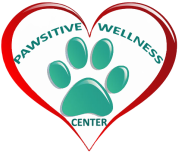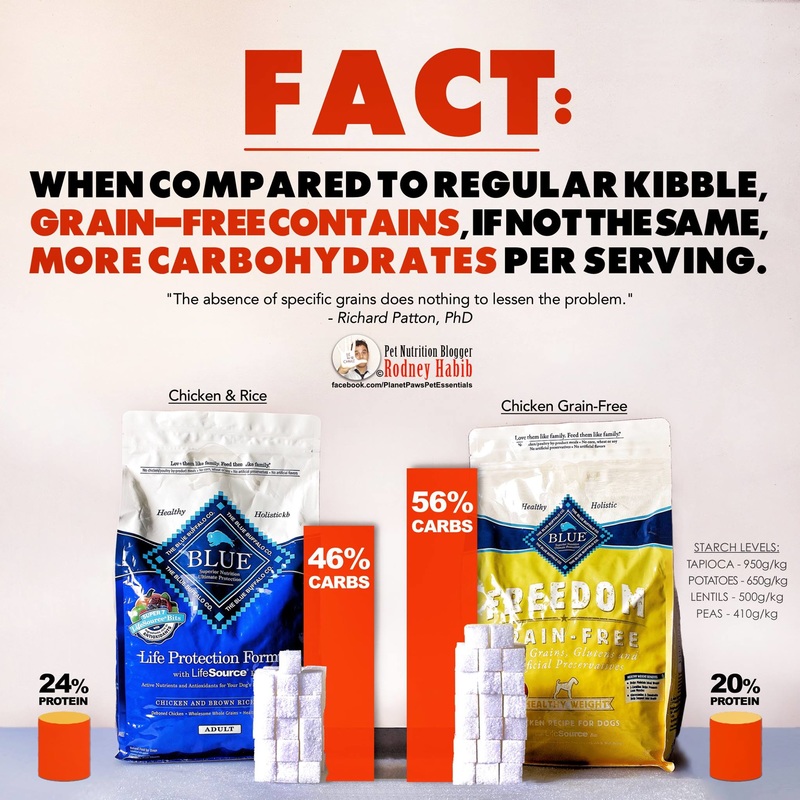THE GRAIN-FREE GIMMICK: IS BUYING A “GRAIN-FREE” PET FOOD REALLY A BETTER VALUE FOR YOUR BUCK?5/25/2016 I have to post this article by Rodney Habib because so many people really don't understand how many carbohydrates are in kibble and they really think they are getting a better quality food when paying more for their grain free product.
For me feeding a raw diet is the only way to go. My dogs don't need carbohydrates that turn into sugar any more than I do. By Rodney Habib Pet Nutrition Blogger “ ‘Grain Free’ is a descriptor for pet food intended to mean no corn, soy, wheat, barley or oats. This is the epitome of false security and I don’t know who to criticize more loudly, the consumer that buys it or the marketer who pushes it. “ - Dr. Richard Patton, PhD With an obesity epidemic on our hands (60% of pets), along with the skyrocketing statistics surrounding diabetes and cancer, is grain-free pet food really the answer? Today, grain-free pet foods account for nearly 30% of pet food sales in the retail channel, hitting almost 24% growth in 2014, adding up to a total of US $2.2 billion sold in US pet stores. With more and more pet parents flooding to these type of foods in hopes of remedying allergies and obesity, why are things getting worse and not better for today’s kibble-fed pet? According to Dr. Patton, pet parents are missing the point: “First of all, the problem is not grain, it is SOLUBLE CARBOHYDRATE, and the absence of specific grains does nothing to lessen the problem. (I know there are those who condemn corn specifically, and its vast monoculture may indeed predispose some deficiency in its nutrient makeup. But I assure you this is minor compared to the problem of excess starch.) The starch needed for the manufacturing process is obtained in other ways, such as potatoes, rice or peas.” It’s the starch (aka sugar) levels that are the problem in pet food, not so much the grain aspect (although most grains are beaming with starch!). So, with a carb average in pet food being around 40%, is this a good level? Or is it too high for an obligate (cat) and facultative carnivore (dog)? Well, according to researchers, the average evolutionary diet of the dog or cat was around 4% carbs! “So here we come to the fundamental point: Not only is the modern dry diet higher in soluble carbohydrate than anything animals ever ate throughout evolution, but also the animal’s biological machinery was perfected to eke out a survival in a world with near constant lack of soluble carbohydrate.” – Dr. Patton Furthermore, according to Dr. Jean Dodds, high glycemic starches and cereal grains used in pet foods are the leading cause of the rampant obesity and chronic disease pervading the canine population. She believes these starches have resulted in the decades-long deterioration in the health of our nation's dogs and landed us right in the middle of a national canine health crisis, where obesity and chronic disease are the norm, not the exception. The bottom line here, my fellow pet parents of the planet, is that pet food manufacturers switched to grain-free foods because we, the public, demanded it (vilifying fats and grains), not because they wanted too. Basically, every time our pets would itch or scratch, we would self-diagnose, and grains had to be the problem. So we set out in search of grain-less foods and, in return, the manufacturers offered us starchy vegetables and legumes to compensate. Why? Because the kibble machinery cannot function without starchy carbohydrates in the pet food mix. It’s impossible. Well, unless you are a raw food manufacturer. Next time you head out to buy a bag of food, compare the carb contents of the grain-free bag you’re about to purchase, with the other grain-based bag the manufacturer offers. You will see both bags have the same amounts of carbs & starches which, ultimately, your pets’ bodies will convert to sugar, leading to a whole host of future problems. Moral of the story: don’t be duped and fall for the grain-free hype! If you want to drop all those sugary starches, try switching to a fresh, clean, whole food diet rich in ethically raised meat-based proteins. Rodney Habib - Pet Nutrition Blogger "An educated, informed and well-researched community of pet owners can only put more pressure on the pet food industry to be better! When pet owners know better, they will only do better!" new blog posts on developing site www.pawsitivewellnesscenter.com
0 Comments
Your comment will be posted after it is approved.
Leave a Reply. |
Blog CreatorMary DeRoche Archives
April 2024
Categories
All
|
DISCLAIMER: I, Mary DeRoche, am not a veterinarian and do not practice medicine. I do not diagnose, cure, heal, treat disease or otherwise prescribe medication. I assist people in working with their animals in correcting energetic imbalances in their pet’s bio-field that assists the body to release its innate healing ability. When the energy chi of the body is balanced and moving correctly, the body’s innate natural energy heals itself. All healing is self-healing. Animals are affected by their environment so I also include the pet parents in my work. Animals do pick up energy from their family and environment. I only recommend the use of therapeutic grade essential oils for your pets because therapeutic grade essential oils have been tested to guarantee that they are free of synthetics, additives, toxins and any other impurities, which can result in side effects and/or inconsistent results. Essential oils and supplements are recommendations to help boost the pet’s immune system.
I recommend that clients continue to see their pet’s regular veterinarian and follow their advice and my work is a complement to regular allopathic medicine. My spiritual energy work is not a substitute for conventional medical diagnosis or treatment for any medical or psychological condition. For such issues, you should seek the proper licensed veterinarian. I am a Healing Touch for Animals Practitioner and a Subtle Energy Practitioner and my work is spiritually and energetically based and I believe all healing is spiritual in nature. I do not make any promises, warranties or guarantees about results of my work, or of the energy sessions. The energy sessions help many animals but like any energy work, it might not work for everyone. The use of essential oils, herbs and supplements is to assist the pet with balancing chakra centers for proper energy flow or chi.
© 2013~2023 Pawsitive Wellness Center All Rights Reserved.
I recommend that clients continue to see their pet’s regular veterinarian and follow their advice and my work is a complement to regular allopathic medicine. My spiritual energy work is not a substitute for conventional medical diagnosis or treatment for any medical or psychological condition. For such issues, you should seek the proper licensed veterinarian. I am a Healing Touch for Animals Practitioner and a Subtle Energy Practitioner and my work is spiritually and energetically based and I believe all healing is spiritual in nature. I do not make any promises, warranties or guarantees about results of my work, or of the energy sessions. The energy sessions help many animals but like any energy work, it might not work for everyone. The use of essential oils, herbs and supplements is to assist the pet with balancing chakra centers for proper energy flow or chi.
© 2013~2023 Pawsitive Wellness Center All Rights Reserved.


 RSS Feed
RSS Feed